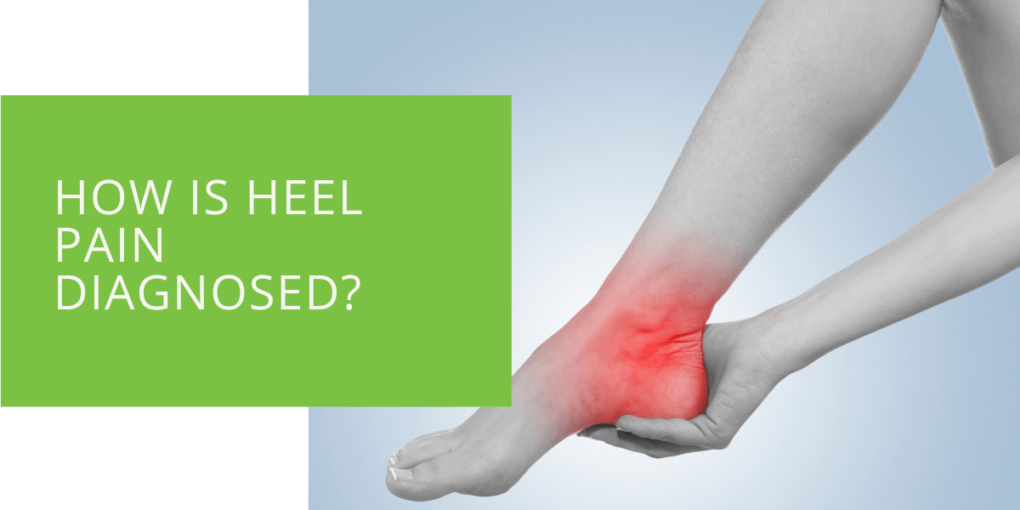How Is Heel Pain Diagnosed?
Heel pain is a common complaint, affecting up to 10% of the population. Various factors, including injuries, inflammation, and structural issues, can cause it. This article will explore podiatrists' different methods of diagnosing heel pain and helping patients find relief.
Medical History and Physical Exam
A thorough medical history and physical exam are crucial to diagnosing heel pain. During the medical history, the podiatrist will ask the patient about their symptoms, medical history, and any previous injuries. They will also ask about the patient's occupation and physical activities, as these can provide clues to the cause of the pain.
The podiatrist will examine the foot and ankle during the physical exam, looking for signs of swelling, redness, and tenderness. They will also assess the range of motion of the foot and ankle, looking for any limitations or abnormalities. The podiatrist may use various physical exam techniques to diagnose heel pain, including palpation - pressing on specific areas of the foot to check for tenderness or swelling - and range of motion tests.
Imaging Tests
Imaging tests can provide valuable information about the cause of heel pain. X-rays are often used as a first-line diagnostic tool, as they can detect fractures, bone spurs, and other structural abnormalities. Ultrasound and MRI are also commonly used to diagnose soft tissue injuries, such as plantar fasciitis or tendonitis. CT scans and bone scans may also be used to diagnose certain conditions, such as stress fractures.
During an imaging test, the patient will lie on a table while the machine takes images of the foot and ankle. The test is painless and non-invasive and typically takes between 30 and 60 minutes.
Laboratory Tests
In some cases, laboratory tests may be necessary to diagnose the cause of heel pain. Blood tests can detect signs of infection or inflammation, while cultures can help identify the presence of bacteria or other pathogens. Blood tests may also screen for conditions such as rheumatoid arthritis or other autoimmune disorders that may cause heel pain.
The patient must provide a blood sample, typically taken from a vein in the arm. The sample is sent to a laboratory for analysis, and the results are usually available within a few days.

Other Heel Pain Diagnostic Techniques
In addition to medical history, physical exam, and imaging tests, several other diagnostic techniques may be used to diagnose heel pain. Nerve conduction studies can help diagnose nerve disorders that may be causing pain, such as tarsal tunnel syndrome or neuropathy. Electromyography (EMG) may also be used to diagnose nerve disorders.
Arthroscopy is a minimally invasive diagnostic technique that involves inserting a small camera into the joint to examine the joint and surrounding tissue. This technique can diagnose conditions such as arthritis or cartilage damage.
Finally, bone biopsy may diagnose certain conditions, such as osteomyelitis - a bone infection that can cause heel pain. During a bone biopsy, a small sample of bone tissue is removed and sent to a laboratory for analysis.
Common Causes of Heel Pain
Various factors, including injuries, inflammation, and structural issues, can cause heel pain. Below are some of the most common causes of heel pain:
Plantar Fasciitis
Plantar fasciitis is the most common cause of heel pain. It is a condition in which the plantar fascia - a thick band of tissue that runs along the bottom of the foot - becomes inflamed, leading to pain and stiffness in the heel and arch. Plantar fasciitis is often caused by repetitive strain, such as running or standing for long periods.
Heel Spurs
Heel spurs are bony growths that develop on the heel bone. They can be caused by repetitive strain, as well as by conditions such as arthritis or wearing shoes that do not fit properly. Heel spurs can cause pain and inflammation in the heel.
Achilles Tendonitis
Achilles tendonitis is when the Achilles tendon - the largest tendon in the body - becomes inflamed. This can cause pain and stiffness in the back of the heel, as well as swelling and tenderness. Achilles tendonitis is often caused by overuse, such as running or jumping.

Stress Fractures
Stress fractures are small cracks that develop in the foot or ankle bones. They can be caused by repetitive stress, such as running, jumping, or trauma. Stress fractures can cause pain and tenderness in the affected area, swelling, and difficulty bearing weight.
Calcaneal Stress Fracture
Calcaneal stress fractures are a specific type of stress fracture that occurs in the heel bone. They can be caused by repetitive stress or trauma and cause pain and tenderness in the heel. Calcaneal stress fractures can be difficult to diagnose, as they may not appear on an X-ray.
Inflammation of the Bursa
The bursa is a small fluid-filled sac that cushions the joints. Inflammation of the bursa in the heel can cause pain and tenderness. This condition is often caused by repetitive stress or trauma.
Tarsal Tunnel Syndrome
Tarsal tunnel syndrome is when the posterior tibial nerve - which runs along the inside of the ankle - is compressed as it passes through a narrow passage in the ankle. This can cause pain and tingling in the heel and arch of the foot. Tarsal tunnel syndrome is often caused by overuse or injury.
Conclusion
Heel pain can be frustrating and debilitating, but it is important to remember that it is often treatable with proper diagnosis and treatment. If you are experiencing heel pain, don't suffer in silence - seek medical attention from a podiatrist. By taking a thorough medical history, performing a physical exam, and using imaging tests and other diagnostic techniques as needed, a podiatrist can help identify the underlying cause of your pain and develop an effective treatment plan to help you find relief.

